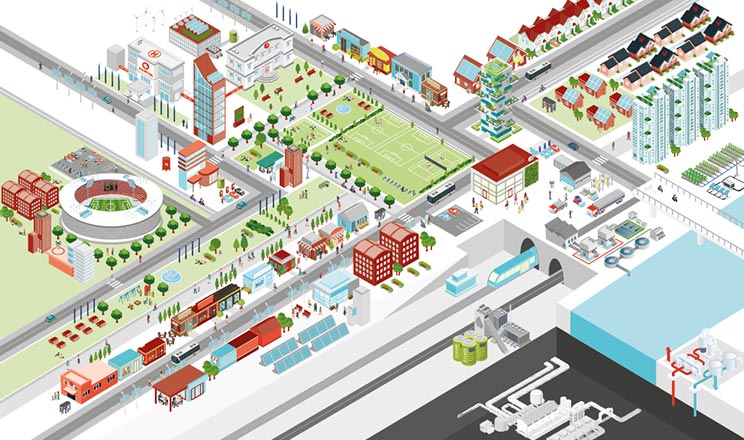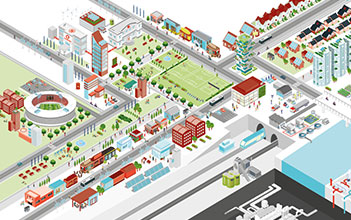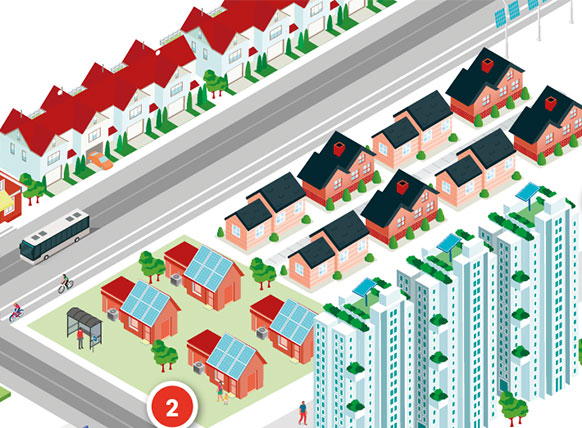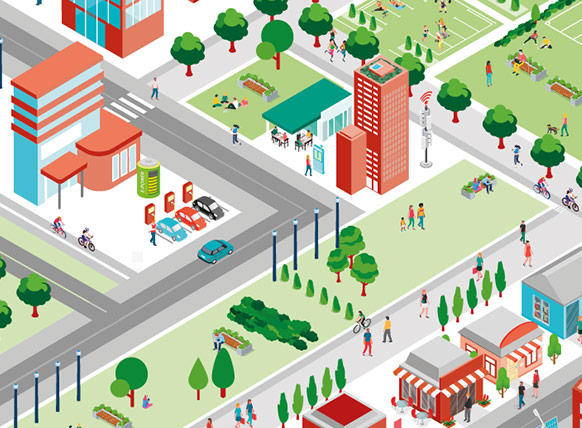Visualising our homes of the future
Chris Lovatt, Chief Operating Officer of E.ON UK Energy Solutions discusses how our homes will change in the future to become more sustainable and energy efficient.




The look and feel of our homes is already changing as part of the UK's switch to cleaner, sustainable energy. And our towns and cities must transform drastically over the next few decades if we are to meet our 2050 net zero goals and make the UK a cleaner, greener and healthier place to live.
To help picture how our cities might change, we’ve worked with the UK Green Building Council (UKGBC) to create Streets of the Future, an interactive visualisation of what homes, buildings and cities could look like in the decades to come.
How our homes will change
Over the coming years, our homes will be designed in line with net zero standards, meaning they will become carbon neutral. This will be achieved through a two-pronged approach – by adding energy efficiency and more sustainable technologies to old buildings and ensuring all new homes are built to net zero specifications from the outset.
We can expect air source heat pumps and ground source heat pumps to replace gas boilers in the majority of existing properties and to become standard in all new homes. In fact, for the UK to collectively reach net zero, the UKGBC predicts that 80% of our homes will need to replace their boilers with high efficiency heat pumps by 2040, and one in four homes will need to have solar panels installed.


Solar panels, often the most visible of new technologies for homes, will power our homes with renewable electricity, with batteries storing excess electricity generated during the day to use at night. Solar glazing and high-performance insulation, which regulate the heat in buildings to lessen the reliance on central heating and air conditioning, will become the norm too.
What’s more, as renewable energy replaces polluting fossil fuels across the country, and as smarter energy networks grow around the country, energy will frequently be shared between residential and commercial buildings. For example, waste heat from a local factory or data centre could be captured and used to heat nearby homes – helping to make an entire city more energy efficient.
A smarter, more sustainable home
Almost every home will have electric vehicle (EV) charging points outside for cars that we will increasingly share or borrow, rather than own outright. And by reducing our dependency on private vehicles, congestion, carbon emissions and air pollution will reduce too. There will also be racks for e-scooters and e-bikes for quick trips around the city, while the stuff of science fiction will turn into reality with landing pads for drone deliveries becoming commonplace.
Electric vehicles can also become an integral part of powering your home. Think of an EV as a battery on four wheels, when parked up in the evening it will supplement the energy from your solar panels and help power your daily life, charging again overnight so it’s ready for use in the morning.


Our homes will also make much greater use of smart technology to help us become less reliant on harmful fossil fuels. Smart meters, which help energy companies optimise supply and demand and help to make homes more energy efficient, will be integral to every home. Smart appliances, such as washing machines and dishwashers, will use less water and energy and smart thermostats will optimise your heating, so you only heat the rooms you’re using and when you need to.
And it’s not just an increased use of technology we can expect; there will also be more space for carbon absorbing greenery. Rooftop and vertical gardens and green walls will be fed by harvested rainwater and sustainable drainage systems that help conserve water and reduce the risk of flooding.
Take your home into the future now
E.ON is helping customers take action for climate and making the UK's homes more sustainable, through a range of sustainable energy solutions. Discover how we can work together to reduce your carbon footprint and make your home a smarter and create a more sustainable home for you to live and work in.
And visit the Streets of the Future for yourself to explore how our cities will look and operate in a future world designed to tackle the climate crisis – absorbing the new technologies and lifestyle changes in our buildings, road traffic, energy generation and even recreation.